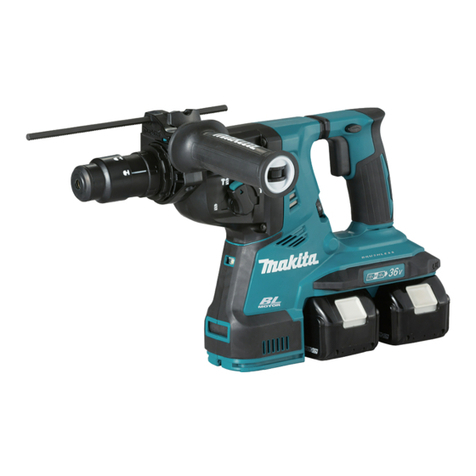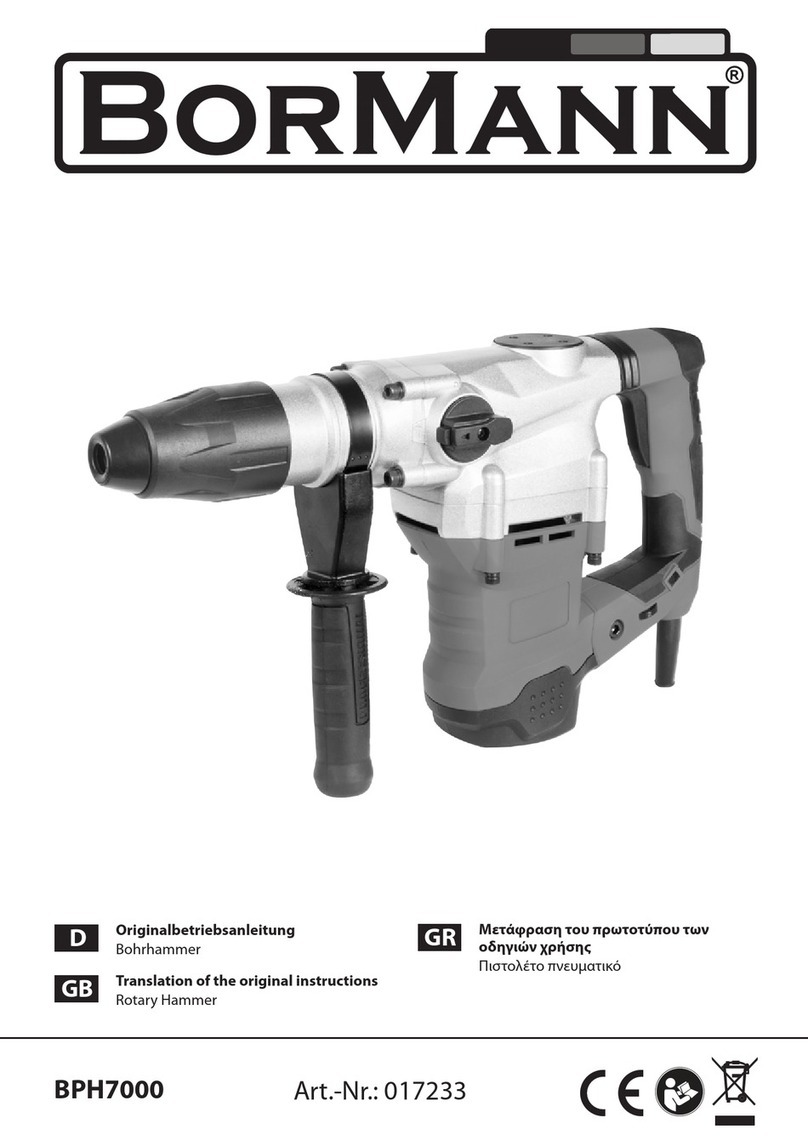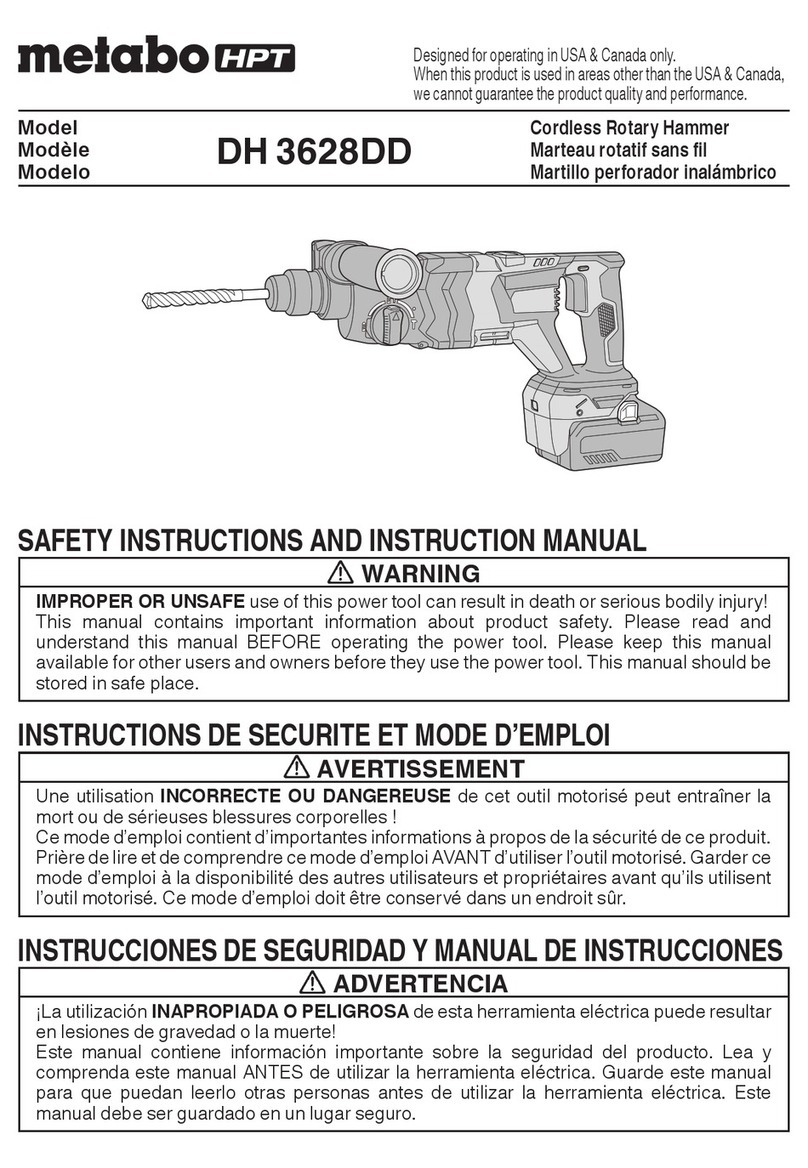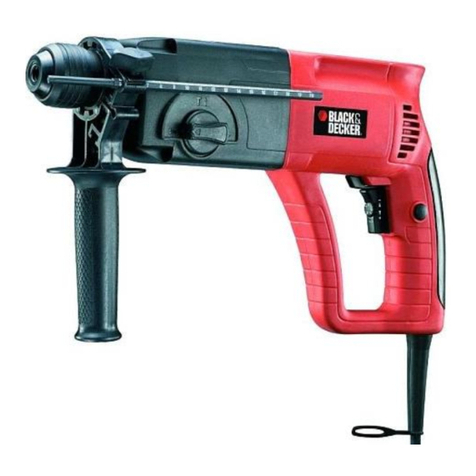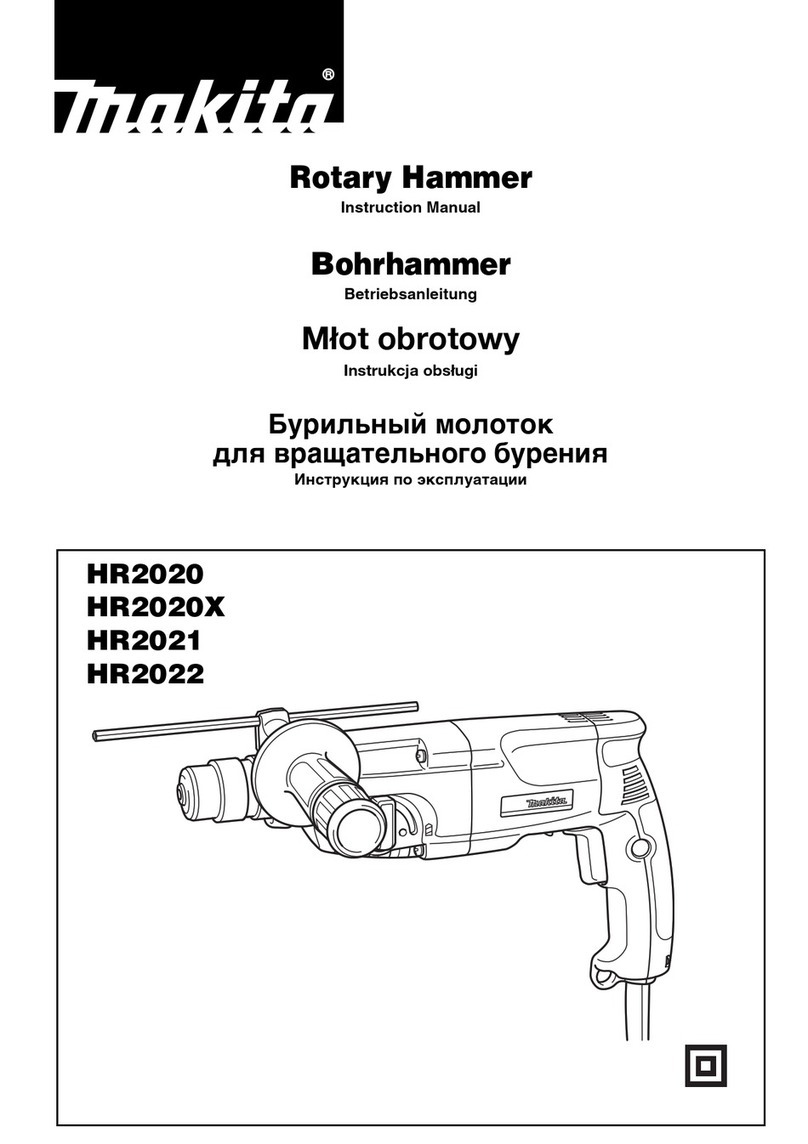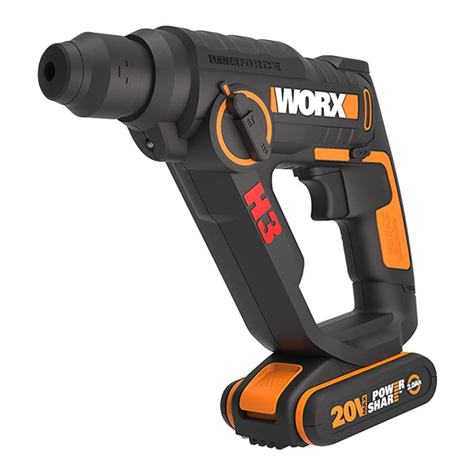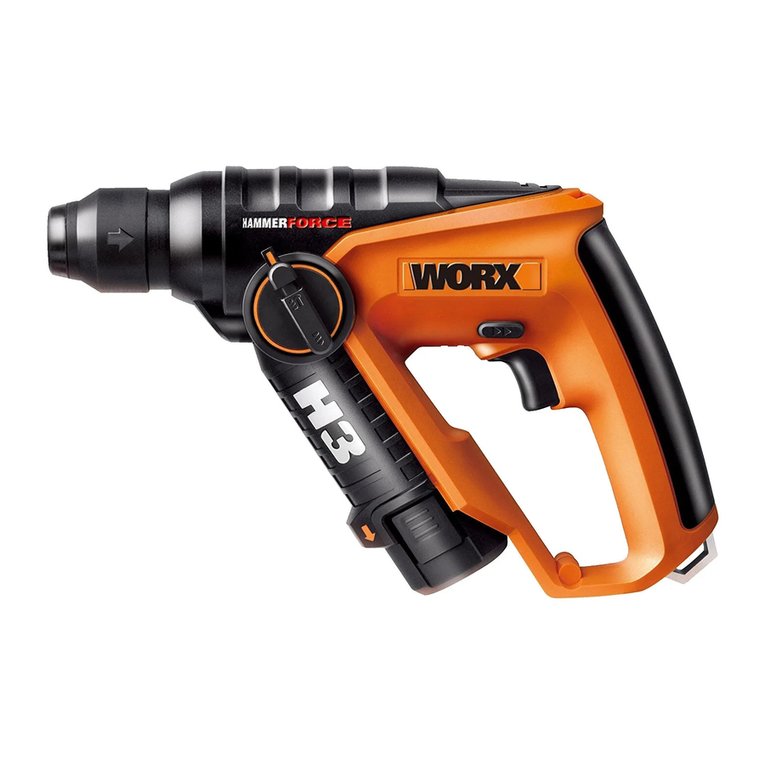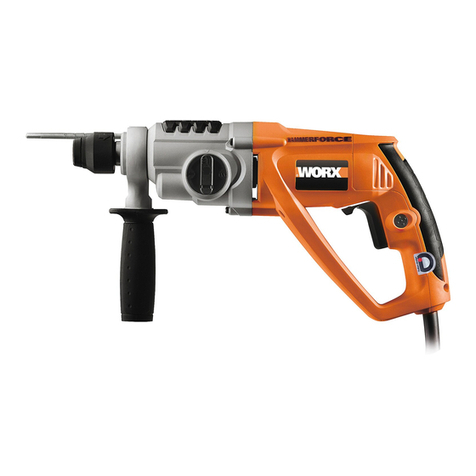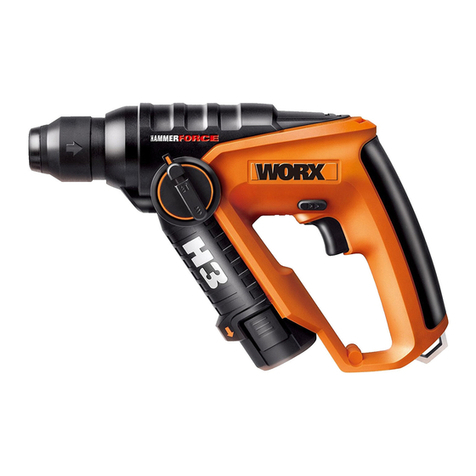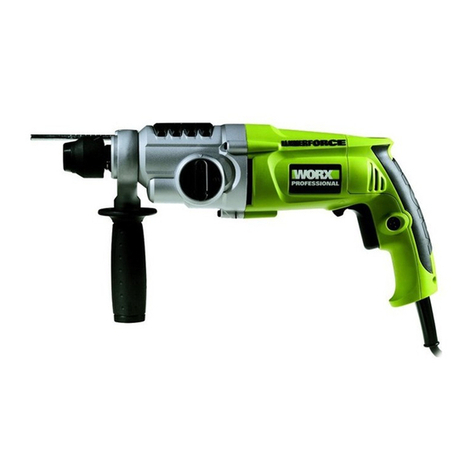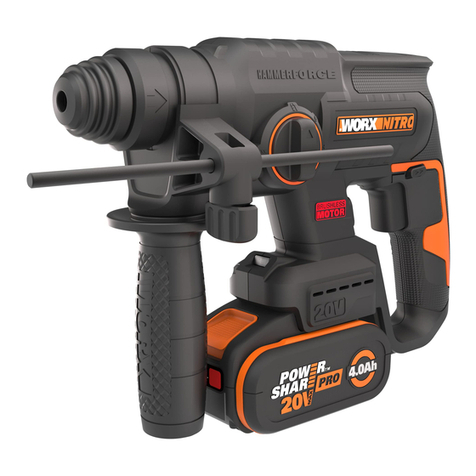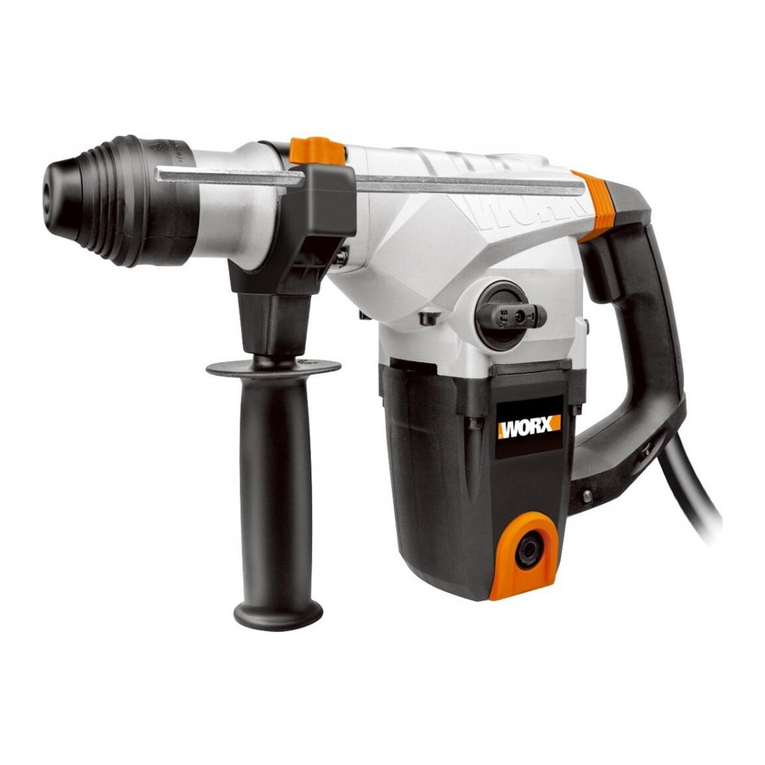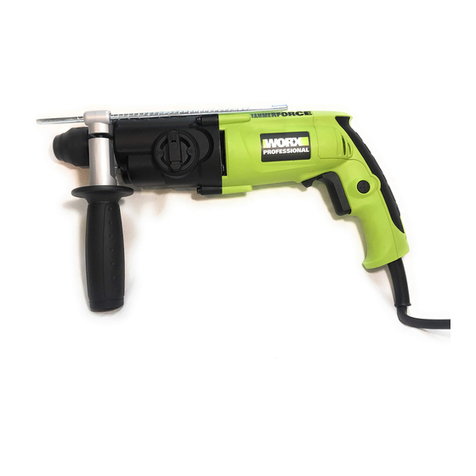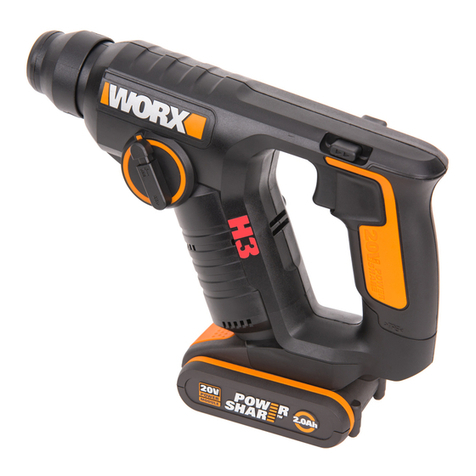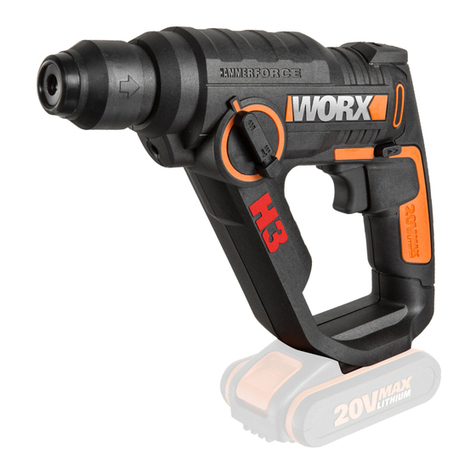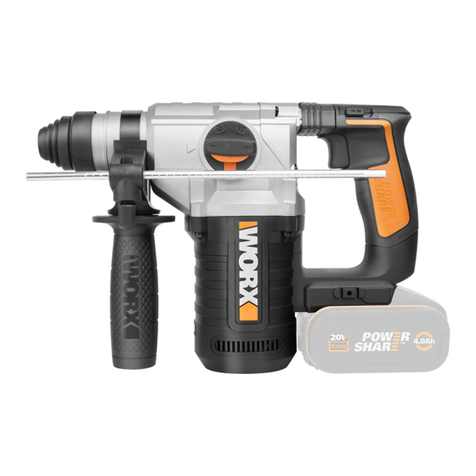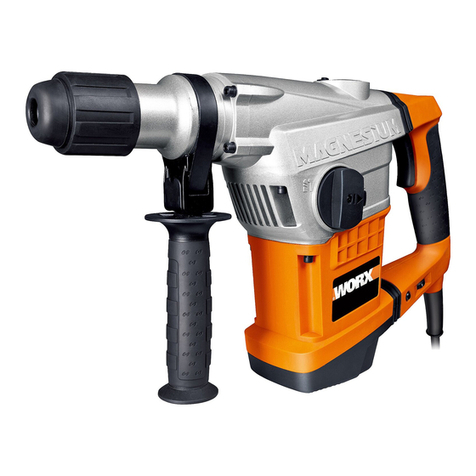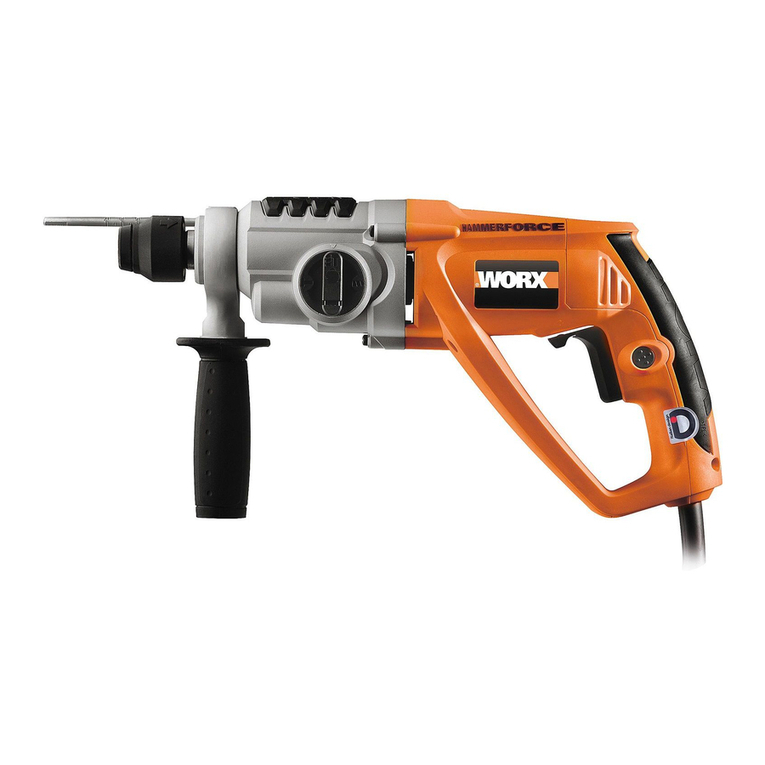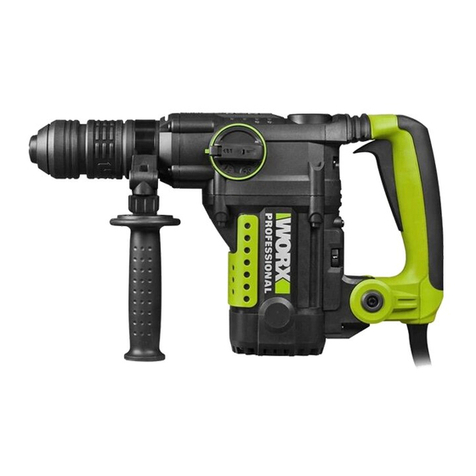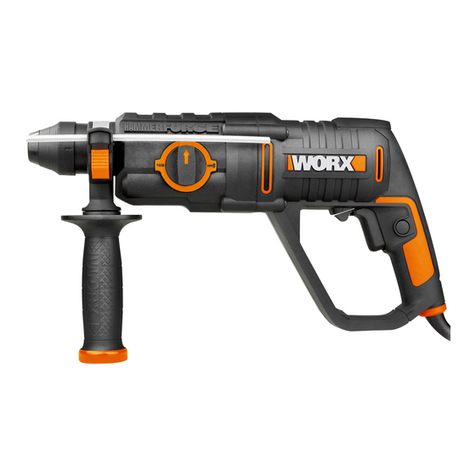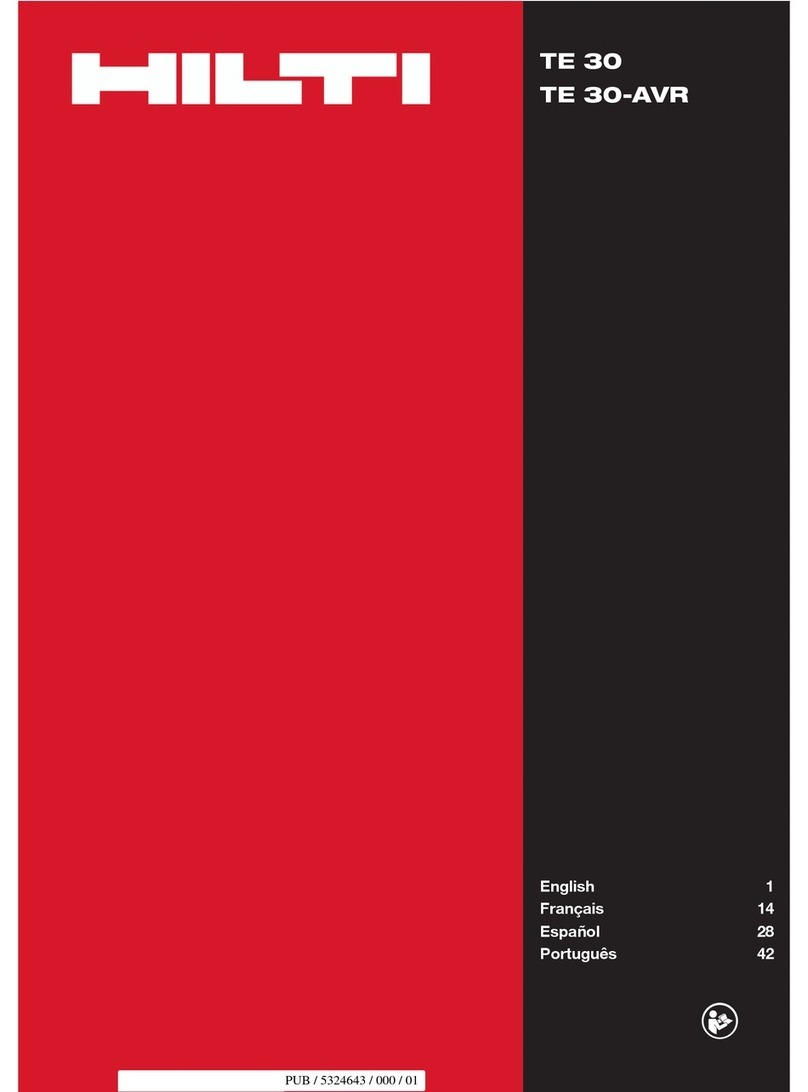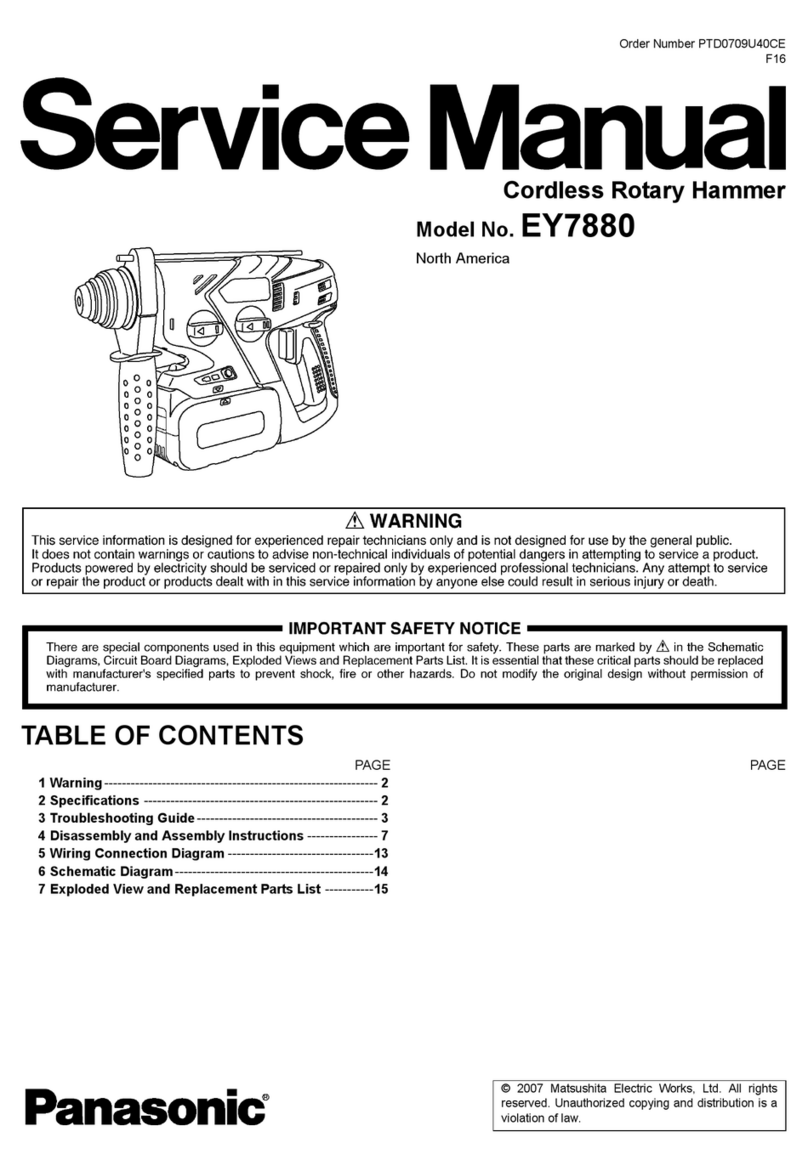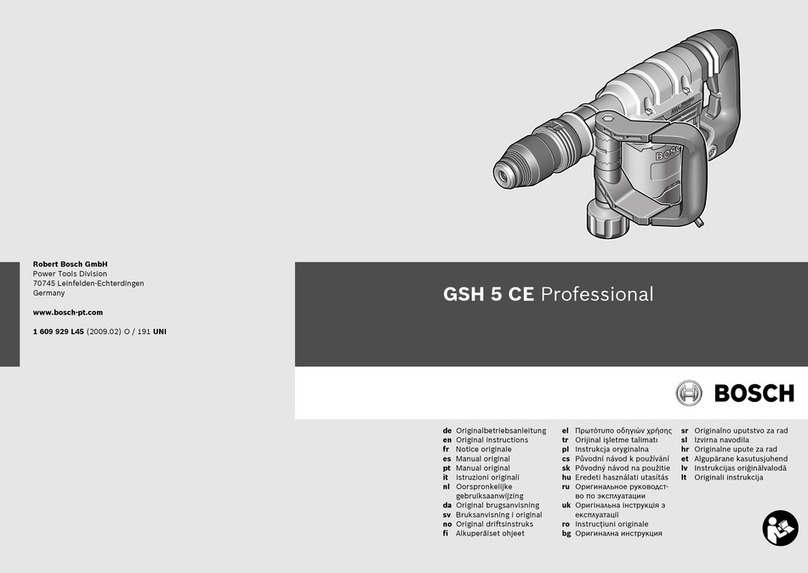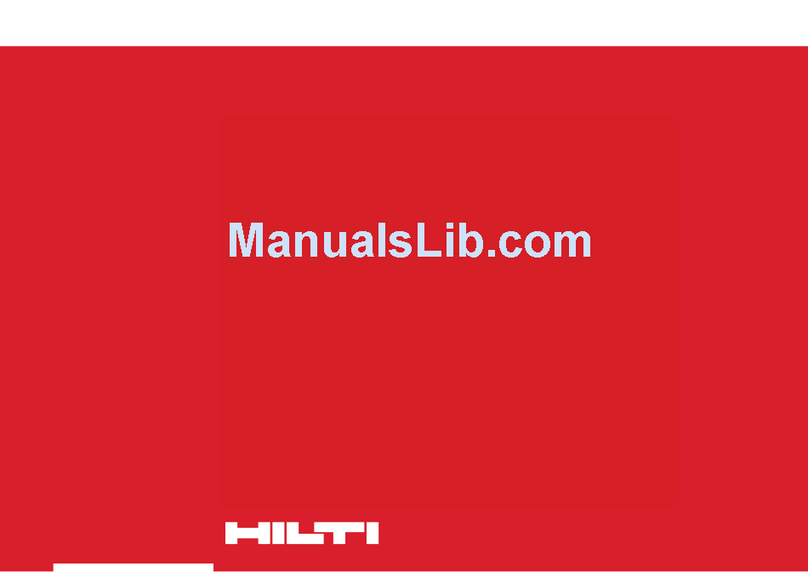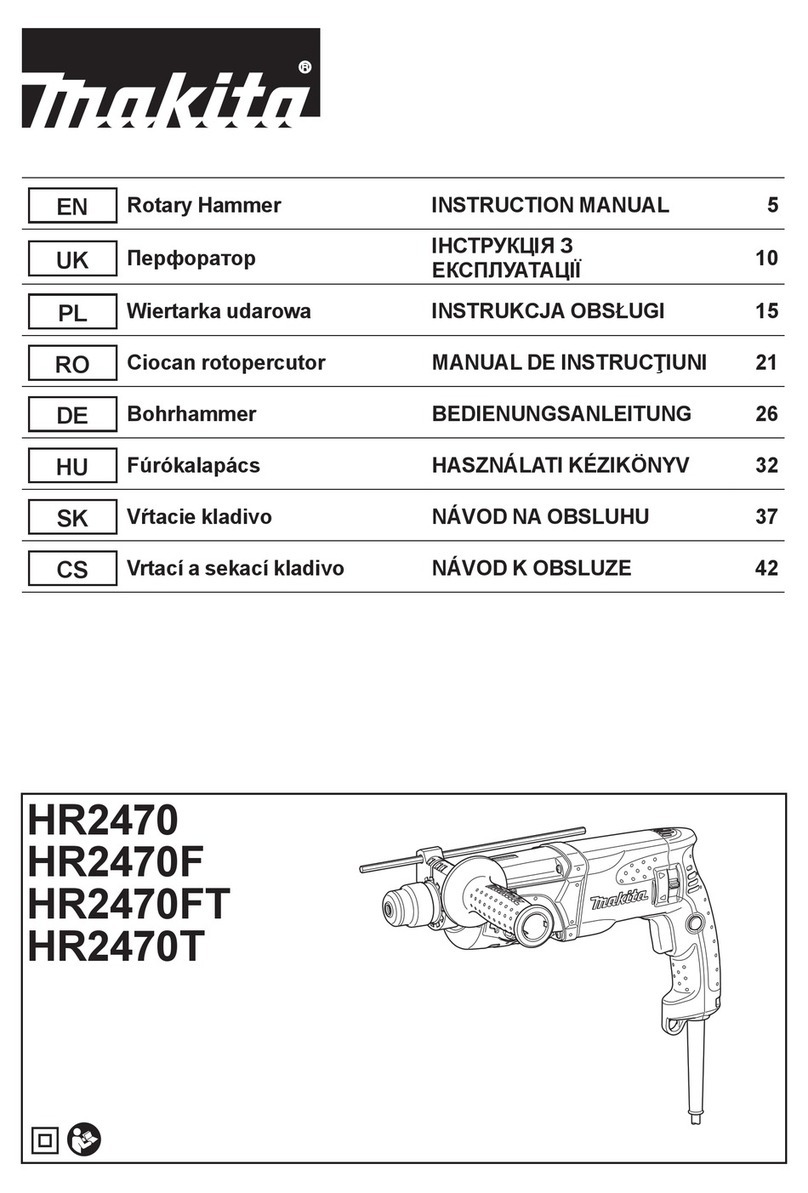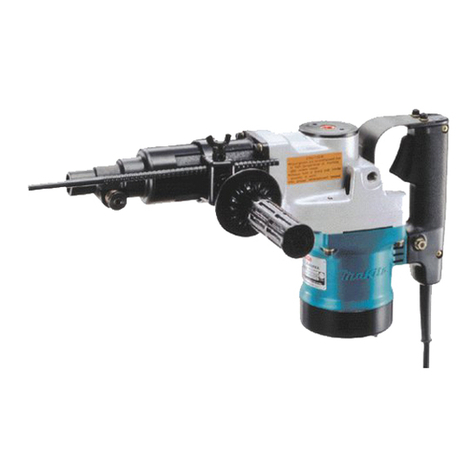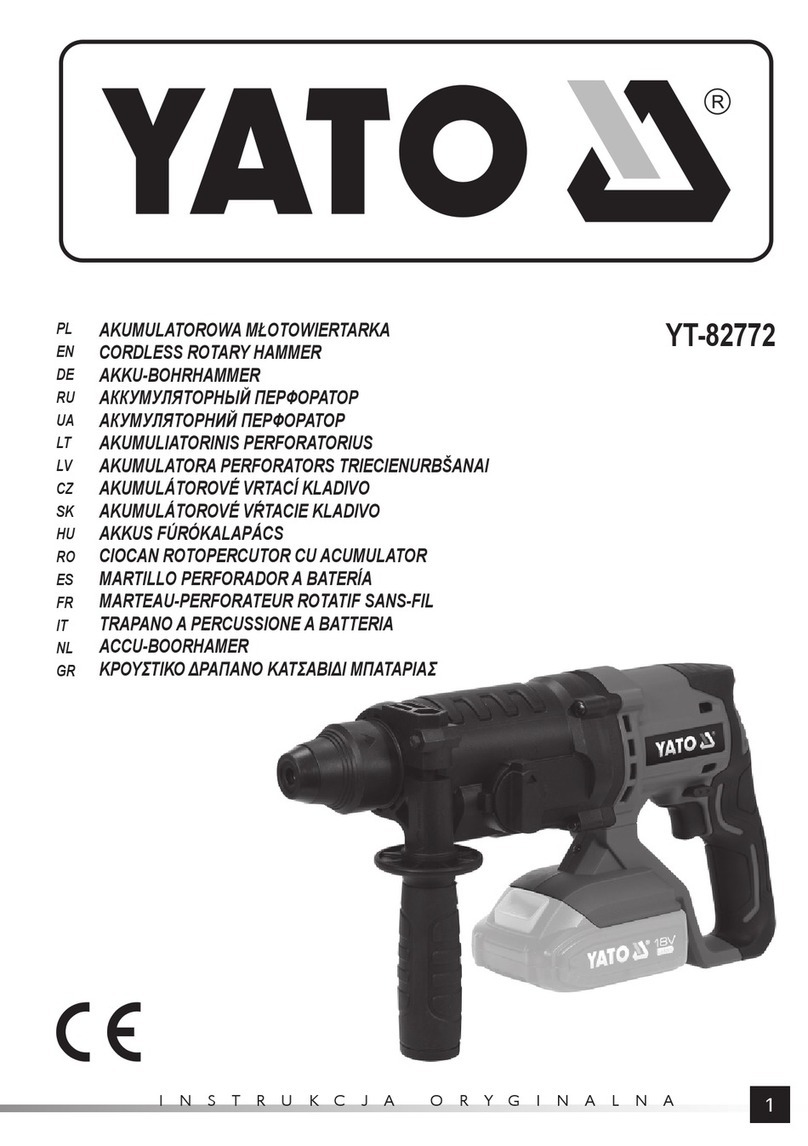10
HAMMER SAFETY
WARNINGS
1. Wear ear protectors. Exposure to noise
can cause hearing loss.
2. Use auxiliary handle(s), if supplied
with the tool. Loss of control can cause
personal injury.
3. Hold power tool by insulated
gripping surfaces, when performing
an operation where the cutting
accessory may contact hidden wiring
or its own cord. Cutting accessory
contacting a “live” wire may make
exposed metal parts of the power tool
“live” and could give the operator an
electric shock.
ADDITIONAL SAFETY
RULES FOR HAMMER
1. Always wear a dust mask.
SYMBOLS
OPERATING
INSTRUCTIONS
NOTE: Before using the tool, read the
instruction book carefully.
INTENDED USE
The machine is intended for hammer drilling
in concrete, brick and stone as well as for light
chiseling work. It is also suitable for drilling without
impact in wood, metal, ceramic and plastic.
1. ADJUSTING THE AUXILIARY HANDLE
(See Fig. A )
For your personal safety we recommend using
the auxiliary handle at all times.
To adjust the handle, rotate the bottom of the
handle anti-clockwise and rotate the handle
around the hammer collar until the handle is
in the desired position.Tighten fully.
2. USING THE DEPTH GAUGE (See Fig. A)
The depth gauge can be used to set a constant
depth to the drill.
Rotate the locking screw on the top of the
handle anti-clockwise to loosen, insert the
depth stop into the handle. Adjust it to the
desired depth. Rotate the locking screw
clockwise to tighten.
3. FITTING BITS OR CHUCK (See Fig. B1)
Clean the bit shank and apply grease before
installing the bit. Hold the rotary grip, pull
back the lock sleeve and insert the bits or
chuck into the bit holder.Turn the bit and push
it in until a resistance is felt.The shaft drops
completely into the bit holder. Once you are
satisfied that it has been seated, release the
black lock sleeve.This would lock the bits or
chuck into position.
After installing, always make sure that the tool
or chuck is securely held in the bit holder by
trying to pull it out.
If the bits or chuck is not located well, repeat
the operation again.
4. REMOVE BITS OR KEY CHUCK
(See Fig. B1)
To remove the tool or chuck, pull back the lock
sleeve, hold and pull the tool or chuck out.
To reduce the risk of injury, user
must read instruction manual
Double insulation
Warning
Wear ear protection
Wear eye protection
Wear dust mask
Waste electrical products must not
be disposed of with household
waste. Please recycle where
facilities exist. Check with your local
authorities or retailer for recycling
advice.
